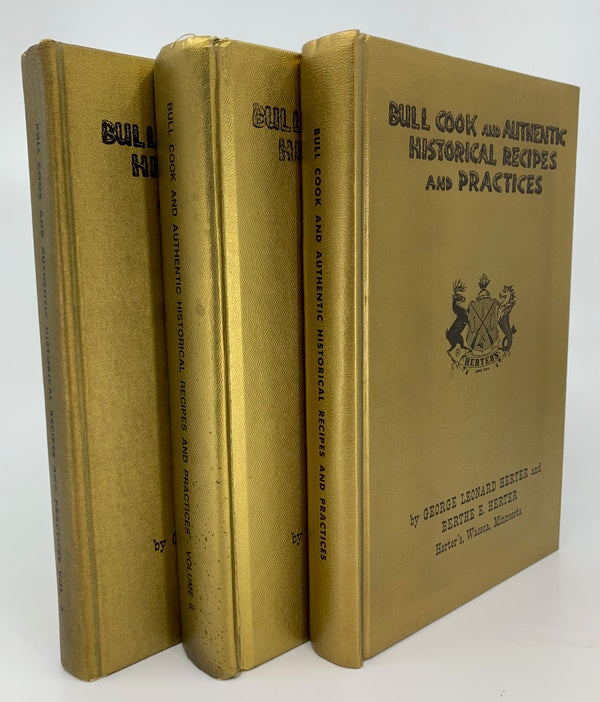OP: Bull Cook and Authentic Historical Recipes and Practices Vols I-III
Outrageous, preposterous, bombastic, chauvinistic, outlandish, and dismissive are all words used to describe George Leonard Herter (1911–1994). The New York Times describes him as a “surly sage, gun-toting Minnesotan and All-American crank” and an “oddball know-it-all.”
We rather like to think of this expert raconteur with the qualified affection one might have for an occasionally racist, frequently misogynist, and most certainly unhinged distant relative.
Herter, an outdoor goods store owner and operator by day, was also a prolific writer. An appreciation for culture and good eating led to his self-published cookbook, Bull Cook and Authentic Historical Recipes and Practices (1960). By 1966 Herter claimed that over a million copies had sold, “more than any other cookbook ever published.” Though his calculations are specious, the book was indeed a massive hit and had been reprinted fifteen times by 1970. He followed with two additional volumes. The series is now something of a cult classic.
To call Bull Cook a set of recipe books, however, would be a disservice. Herter is an opinionated storyteller first and foremost, and nearly every recipe is preceded by a purportedly historical account that may—or may not—have any relationship to the dish that follows. Fact checking at random, we are surprised at how many truths are to be found, though the distance between them might be filled with conjecture and hyperbole.
The recipe for burro sandwiches—filled with refried beans and cheese—in Volume I, for example, begins with the real 16th century historical figure Papantzin, sister to Aztec ruler Montezuma. Herter claims she invented refried beans (questionable). Then, without warning, he puts us in late 19th-century Arizona at Wyatt Earp’s Oriental Saloon (real) where card dealer and gunslinger Luke Short worked (confirmed) and loved refried beans (unsubstantiated).
In Volume II, a five page biography of Isadora Duncan (embellished truths) precedes a recipe for black pussycat cake, which the dancer (allegedly) served at all her parties. The recipe follows along with six pages of step-by-step photography and technical advice (sound). Herter concludes: “Black Pussycat Cake is a cake for a good man…The way to a man’s heart is through his stomach. He may get tired of sleeping with a woman but he never gets tired of an honestly good piece of cake.”
In the final volume, Herter makes the definitive (but controversial) claim that Brunswick stew originated in Virginia at Monticello and that “chicken was never used or intended to be used in Brunswick stew as many later-day cookbooks stupidly state.”
We are pleased to offer a set of three volumes—vols I and II later printings, vol III a first printing—in their distinctive gold clothbound cases without dust jackets, as issued. All are in Very Good condition, clean and unmarked, save for a gift inscription on Vol II, which also bears a small bump to the top edge, and an ownership stamp on Vol III. Wildly entertaining, at least for the thick of skin. You may pick up a little history, some of it true, while you learn to cook a thing or two. You’ll certainly have a hard time putting them down.


